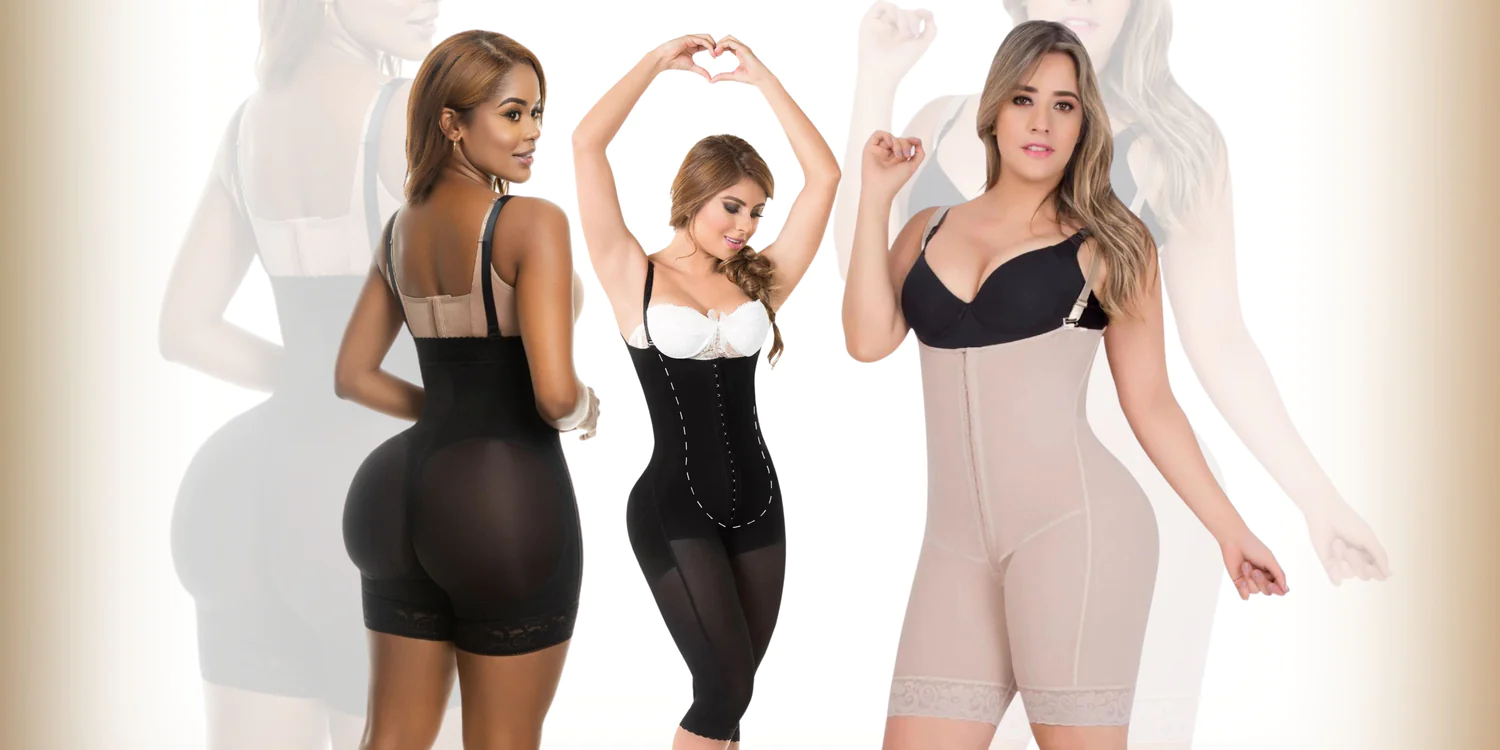“Faja” has become a global term bridging the crowded streets of Bogotá and the glamorous runways of international fashion as it is now part of many who desire to shape their bodies. The Columbian fajas, famous for their quality and effectiveness, no longer just carry this purpose but are also treasured as an element of style and support that has spread beyond its birthplace.
In this all-inclusive guide, we will look behind the scenes to understand what fajas are, their desirability in the market and how they have been woven into different cultures and fashion tastes. If you are new to fajas or looking for an update on your knowledge base, then this deep-dive exploration will take you through its history, benefits range, and incorporation tactics into your daily life using them.
Unveiling the Mythology of Fajas: A Historical Review
The name “faja” comes from a Spanish word meaning “band” or “sash,” which means it has been a major part of Latin American culture since time immemorial. Initially applied for diverse functional purposes such as postpartum recovery or general body shaping, over time it turned out to be a reflection on body image and fashion in a more refined way.
Traditionally, these included simple fabric garments sewn by hand; one example were fajas used during dances or cultural occasions. Not only did they serve practical purposes but they were also integrated with societal norms to mean discipline, dedication and so forth towards achieving an exemplary figure within Latin American communities.
Thus Columbia particularly gained fame as the country where modern fajas originated as well as local clothing manufacturers adjusted them according to needs such as better material quality, advanced compression technologies and sleeker designs.
The Science Behind Shaping: Understanding Faja Compression
What makes Fajas unique among other types of shaping garments is that they are built to provide a high level of compression in order to shape and contour specific parts of the body. The result is compression which redistributes the skin, smoothens it out, eliminates visible bulges and gives you an “instant slimming” effect.
There are different technologies applied in faja compression ranging from latex for maximum firmness and durability to softer materials used postoperatively. The compression zoning may target your waist, thighs, gluteus or even upper arms thereby offering a comprehensive approach towards enhancing your natural figure.
Fajas offer more than just looking good; they may also have some health benefits. Better posture, reduced back pain, and support while doing physical activities are among various advantages associated with them.
Post-Op Recovery and Waist Training: The Healing Power of Fajas
One key application for fajas is after surgery during recovery period especially popular following liposuction or tummy tuck procedures. Post-surgical fajas de compresion is a tailored line of products offering compression needed for healing processes as well as prevention of swellings returning the body back into new contours.
Another type of shapewear called ‘waist trainer’ has taken the world by storm as a modern version of an age-old practice that involves using shaped waistbands over time. Once again there is another side to these girdles because aside from being stylish pieces worn to boost confidence they also work towards redefining your shape.
Beyond Medicine: Everyday Fajas
Fajas have a wide range of medical and training uses, as well as everyday wear. Comfort and breathability are the key aspects of making modern fajas comfortable when worn underneath different clothes.
Everyday Fajas offer light to moderate compression which is perfect for under work outfits or casual clothes that help to smooth your figure. They subtly accentuate natural curves, promoting a slim and firm look that is always stylishly appealing.
Choosing the Right Faja for Your Lifestyle
Choosing a faja depends on personal objectives, lifestyle and level of comfort with the garment itself. Here are some things you may consider while doing so:
Compression Level: Higher compression is ideal for post-op or waist training whereas lighter compression suitable for daily use.
Material: Firmer latex is suitable for more significant shaping whilst softer materials such as elastane or powernet allow breathing during long term wearing.
Design: There are different zonal designs that cater to specific body areas. Some shape all parts of the body while others narrow down to the torso or lower body alone.
Occasion: Determine why you need one; it could be for a special event, daily use or medical reasons.
Comfort: Nowadays, fajas come in different sizes so that people can choose what suits them better. Ensure your faja fits properly and doesn’t cause any discomfort or chafing.
Crafting Confidence with Fajas: The Emblem of Beauty and Fashion
For many people, rather than just being underwear, fajas represent an important tool in self-expression and self-care. How confident one feels after using this type of garment demonstrates just how crucial they are in our lives daily.
For thousands of years since ancient Egypt women (and men) have been binding their bodies into certain shapes by using garments like corsets. However, today’s popular culture has brought fajas into limelight through celebrities and influencers who turn them into an epitome of glamourous fashion statement,
And again like every other cloth, the right choice in styling is very important. It is a science on how to combine different clothes with your faja to get that perfect shape for your body. Think of everything you own from cocktail dresses to fitness gear when selecting and subsequently wearing a faja.
Fajas for Every Body: Inclusivity in Shapewear
The shapewear revolution also triggered a movement towards inclusivity. These days, fajas can be found in various sizes and designs which mean they can accommodate all types of bodies. This inclusivity promotes the embracing and enhancement of beauty in its natural form.
The Colombian Touch: Quality, Craftsmanship, and Tradition
The booming Colombian fajas industry has been about more than just trendy designs; it has also been about quality and craftsmanship. Durability, resistance to wear and tear as well as excellent construction have remained the timeless benchmarks set by Colombian Fajas that have proven hard to equal elsewhere.
Although these pieces are technically called “fajas,” they’re much more comfortable than classic corsets because they provide gentle support while molding the body. Reliability and efficiency are terms used interchangeably with Columbian Fajas globally due to this unwavering dedication to quality.
Sustainability and Ethical Production
Colombia’s shapewear industry is likewise moving towards maintainability and moral creation in light of an undeniably cognizant customer market. By utilizing eco-accommodating materials and fair work rehearses, the business guarantees that its items are brilliant for the buyer as well as for the climate and the networks making them.
The Faja Culture Online: Navigating Your Journey
Fajas have come a long way from their traditional, utilitarian beginnings and are now icons of modern-day style, health and fashion. Their influence on shaping bodies and cultures is deep and still progressing year by year.
This guide serves as a complete primer for anyone who is new to the world of fajas. For the knowledgeable wearer it’s an acknowledgement of a rich past and what lies ahead.
The faja remains symbolic of progressiveness and empowerment, seen through cultural, scientific or even sartorial perspectives. May your journey with faja lead you to self-discovery and improvement, ease and poise wherever that may be.


This portal offers plenty of online slots, designed for different gaming styles.
On this site, you can explore classic slots, modern video slots, and progressive jackpots with stunning graphics and dynamic music.
Whether you’re a fan of minimal mechanics or seek engaging stories, you’re sure to find something that suits you.
https://ok-vmeste.ru/toget/2614-predpochitaete-sygrat-v-interesnyi-igrovoi-avtomat-sweet-bonanza.html
Every slot can be accessed around the clock, no download needed, and well adapted for both all devices.
In addition to games, the site provides helpful reviews, bonuses, and player feedback to help you choose.
Register today, jump into the action, and enjoy the thrill of online slots!
На данной платформе вы обнаружите лучшие игровые слоты от казино Champion.
Ассортимент игр включает проверенные временем слоты и современные слоты с захватывающим оформлением и уникальными бонусами.
Всякий автомат разработан для максимального удовольствия как на десктопе, так и на мобильных устройствах.
Будь вы новичком или профи, здесь вы сможете выбрать что-то по вкусу.
champion игровые автоматы
Игры запускаются в любое время и работают прямо в браузере.
Кроме того, сайт предлагает программы лояльности и обзоры игр, чтобы сделать игру ещё интереснее.
Попробуйте прямо сейчас и оцените преимущества с играми от Champion!
На данной платформе можно найти онлайн-игры от казино Vavada.
Любой игрок может подобрать слот на свой вкус — от классических аппаратов до новейших слотов с яркой графикой.
Vavada предлагает возможность сыграть в проверенных автоматов, включая слоты с крупными выигрышами.
Каждый слот работает в любое время и оптимизирован как для ПК, так и для телефонов.
вавада зеркало
Вы сможете испытать атмосферой игры, не выходя из дома.
Структура платформы понятна, что позволяет быстро найти нужную игру.
Присоединяйтесь сейчас, чтобы погрузиться в мир выигрышей!
На данной платформе вы найдёте разнообразные слоты казино от казино Champion.
Ассортимент игр представляет традиционные игры и актуальные новинки с качественной анимацией и уникальными бонусами.
Всякий автомат оптимизирован для комфортного использования как на ПК, так и на смартфонах.
Даже если вы впервые играете, здесь вы найдёте подходящий вариант.
приложение champions
Слоты работают круглосуточно и не требуют скачивания.
Кроме того, сайт предусматривает акции и рекомендации, для удобства пользователей.
Попробуйте прямо сейчас и оцените преимущества с казино Champion!
On this platform, you can access a wide selection of slot machines from leading developers.
Users can experience classic slots as well as new-generation slots with stunning graphics and bonus rounds.
Even if you’re new or an experienced player, there’s a game that fits your style.
slots
All slot machines are available anytime and compatible with PCs and mobile devices alike.
No download is required, so you can start playing instantly.
The interface is easy to use, making it quick to browse the collection.
Join the fun, and dive into the world of online slots!
这个网站 提供 丰富的 成人内容,满足 成年访客 的 兴趣。
无论您喜欢 哪种类型 的 视频,这里都 一应俱全。
所有 资源 都经过 专业整理,确保 高质量 的 浏览感受。
黄色书刊
我们支持 各种终端 访问,包括 电脑,随时随地 尽情观看。
加入我们,探索 无限精彩 的 成人世界。